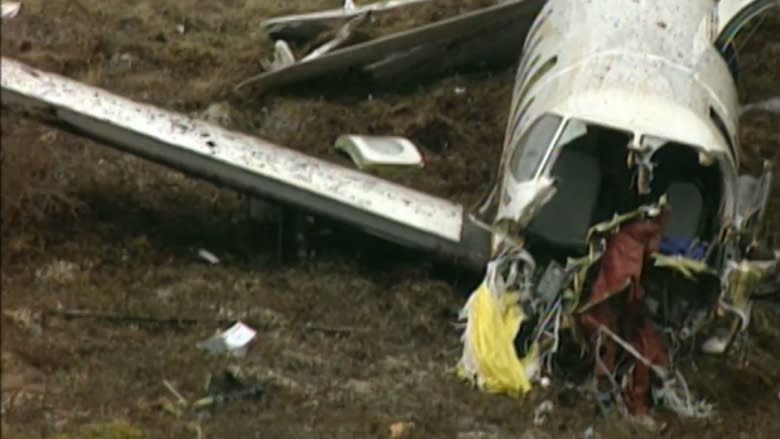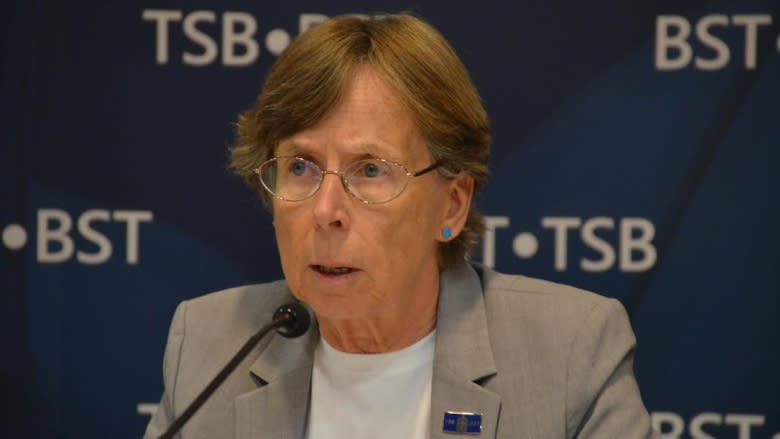Still no resolution to 17-year-old safety recommendation from Clarenville plane crash
A key safety recommendation from a 1998 plane crash near Clarenville has yet to be fully addressed, according to the Transportation Safety Board, despite almost two decades of petitioning to Transport Canada.
The independent oversight board called for stronger training standards to improve pilot decision-making in a report released in March 2000, after a small passenger aircraft crashed in a bog short of the Clarenville landing strip two years earlier.
Transport Canada, a federal department, says it is now expecting to publish rules this summer to address the issues, after years of back-and-forth between the two bodies.
"We don't see any valid reason why these recommendations should take this long to implement," board chair Kathy Fox told CBC Radio's Central Morning.
"Particularly when Transport Canada agrees that something needs to be done."
Errors in decision making
The pilot of V. Kelner Airways Flight 151 was heralded by first responders after the 1998 crash. Rescuers said his skill was the reason no passengers were killed in the crash.
The flight crashed into a bog near the Clarenville landing strip after a severe engine vibration forced the pilot to shut down the engine. Three people were seriously injured on the flight, which was set to travel from St. John's to Goose Bay.
According to an investigation by the Transportation Safety Board, the pilot did not follow the prescribed emergency procedures, and mistakenly believed low oil pressure indicators in the airplane were not legitimate.
The investigation found the aircraft "could probably" have landed safely in St. John's had the pilot reacted when he first saw the low oil pressure warning.
"The pilot encountered and failed to recognize an 'error trap' (unsafe actions taken as a result of wrongful assumptions)," the TSB wrote in its 2000 report.
The board called for improved commercial pilot decision-making, particularly for operators of small commercial aircraft like the one used in the Clarenville crash.
Similar recommendations were made as far back as 1990, when the Transportation Safety Board published a study into accidents in poor weather. Pilot decision-making training has been recommended several times since then, and Fox says she cannot explain what's taking so long.
"Transport Canada has indicated over the years that they were going to take action, and then each year it slips," she said. "We're not really sure why either."
And now, 17 years later
After the report into the V. Kelner Airways crash was published, Transport Canada responded that it agreed training could be improved in some cases.
According to documents kept by the TSB, the government agency wrote a proposed amendment to airline rules shortly afterwards. But that proposed regulation was never enacted, and Transport Canada restarted the process in 2011.
Transport Canada said it could not do an interview with CBC News, but sent a statement saying the agency was going "beyond the scope" of the TSB recommendation and will update airline rules "in line with international standards."
The new standards will be published this summer, Transport Canada said.
"Since this complex file affects many stakeholders with varying views and the department has been working on several high-priority regulatory files, the proposed amendments did not move through the rule-making process as quickly as planned," a spokesperson for Transport Canada said in an email.
Even if pilots get a lot of training, Fox said, focused decision-making training is still important.
"More modern, up-to-date threat and error management training — pilot decision-making training — could really make the difference between a positive outcome and an accident."





